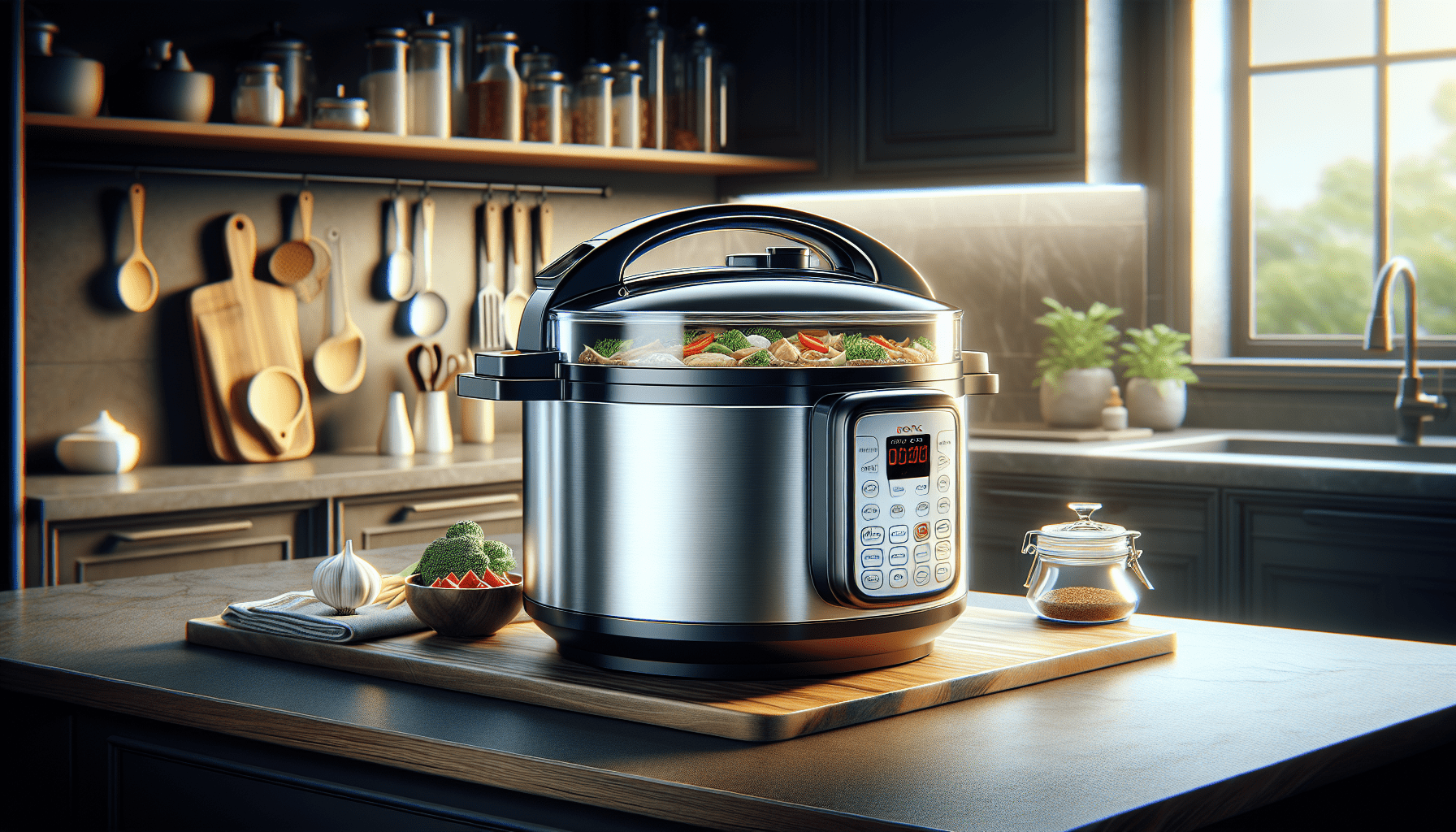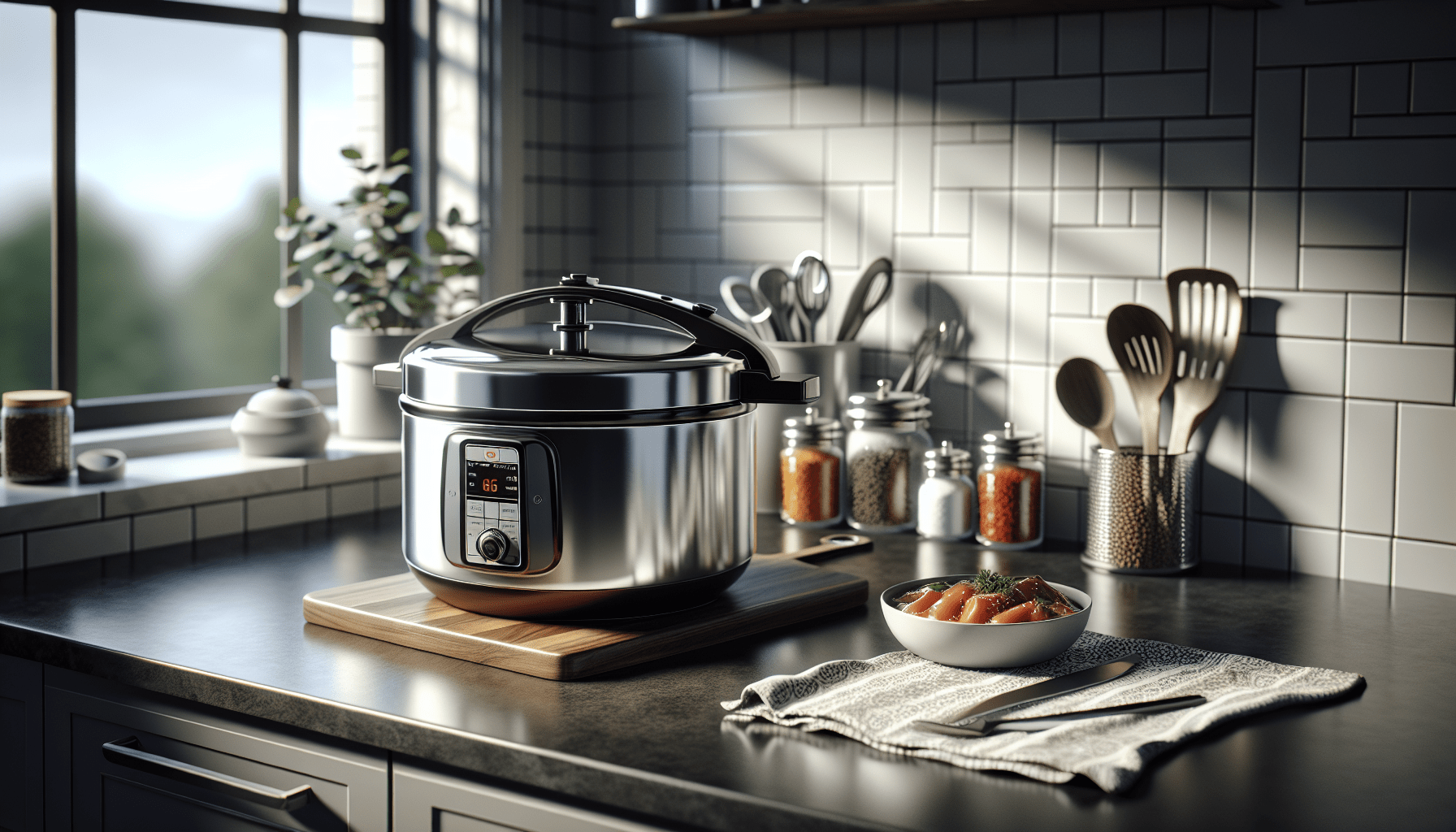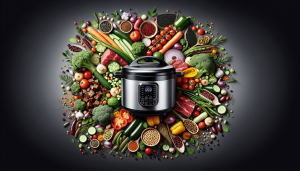Do you often wonder how you can make the most out of your Instant Pot? It’s a fantastic kitchen appliance, yet it’s easy to make mistakes that can hinder its performance or the quality of your meals. In this guide, you’ll learn how to fix common Instant Pot mistakes to ensure smooth and efficient cooking every time. Whether you’re a newbie or a seasoned user, you’ll find valuable tips to enhance your Instant Pot experience.
Understanding the Basics
For starters, let’s understand what an Instant Pot is. It’s a multi-functional electric pressure cooker that combines the functions of several kitchen appliances, including a slow cooker, rice cooker, and yogurt maker. However, making the most out of your Instant Pot requires understanding its settings and functionalities.
Different Models and Their Unique Features
You probably know there are various models of Instant Pots, each with unique features. Different models come with varying functionalities—some may offer air frying, while others focus more on slow cooking. Knowing your model’s strengths can help you maximize its use and avoid mistakes.
| Model | Unique Features |
|---|---|
| Instant Pot Duo | Six functions, budget-friendly |
| Instant Pot Ultra | Altitude adjustment, custom cooking |
| Instant Pot Duo Evo Plus | Easy-grip handles, quick cooling |
| Instant Pot Max | NutriBoost technology, high-pressure |
Importance of Reading the Manual
It may sound cliché, but reading the manual is crucial. Each Instant Pot model comes with its set of instructions and safety features. The manual will guide you through the setup process, functionalities, and even troubleshooting tips. This simple step can save you a lot of hassle in the long run.
Common Instant Pot Mistakes and How to Fix Them
You’re not alone if you’ve encountered issues with your Instant Pot. Here are some common mistakes and effective solutions.
Mistake 1: Forgetting to Seal the Vent
One of the most frequent errors is forgetting to seal the pressure release valve. If it’s not sealed, your food will never come to pressure, leading to undercooked meals.
How to Fix It: Ensure the valve is turned to the ‘Sealing’ position before starting your cook cycle. Check for any food debris that could prevent the valve from sealing properly.
Mistake 2: Overfilling the Pot
Filling the Instant Pot beyond the maximum fill line can cause improper pressure buildup and potentially dangerous spills.
How to Fix It: Always adhere to the fill limits marked inside the pot—⅔ for most foods and never more than ½ for foods that expand like rice and beans.
Mistake 3: Using the Wrong Ingredients
Certain ingredients can affect the pressure and cooking time, like using dairy products early in the cooking process, which can lead to curdling.
How to Fix It: Add dairy products at the end of the cooking cycle. This ensures they blend well without affecting the dish’s texture.
Mistake 4: Incorrect Layering of Ingredients
Incorrectly layering ingredients can result in uneven cooking. Dense foods should be placed at the bottom, while lighter foods and liquids should go on top.
How to Fix It: Always layer ingredients appropriately. For example, if you’re making a stew, put the meat and dense vegetables at the bottom and lighter vegetables on top.
Mistake 5: Miscalculating Cooking Time
Overcooking or undercooking can ruin your meal. Unlike traditional cooking methods, the Instant Pot cooks faster, but this requires accurate time settings.
How to Fix It: Follow tested recipes and make note of the ideal cooking times for various dishes. You may need to adjust based on your model and personal preferences.
Mistake 6: Ignoring Natural Pressure Release
Releasing the pressure too quickly can result in dangerous splattering of hot food. Each dish may require a specific pressure release method for the best results.
How to Fix It: Use Natural Pressure Release (NPR) for soups and stews to let the pressure subside gradually. Use Quick Release (QR) for vegetables and lighter foods.
Mistake 7: Not Adding Enough Liquid
Not adding enough liquid can prevent the Instant Pot from reaching the required pressure, leading to a ‘Burn’ error message.
How to Fix It: Follow recipes that specify the right amount of liquid. At least one cup of liquid is usually required for most recipes.

Advanced Tips for Common Issues
As you grow comfortable with your Instant Pot, you may encounter more advanced issues. Addressing these can further enhance your cooking experience.
Getting Rid of the ‘Burn’ Message
Seeing a ‘Burn’ message can be alarming. This usually occurs when food sticks to the bottom or there isn’t enough liquid.
How to Fix It: To avoid this, deglaze the bottom of the pot after sautéing by adding some liquid and scraping off the bits before sealing and cooking.
Dealing with Foamy Foods
Some foods, like grains and beans, foam up while cooking and can clog the vent.
How to Fix It: Add a tablespoon of oil to the water when cooking foamy foods. This helps reduce foaming and prevents clogging.
Sauté Function Overheats
The Sauté function can sometimes overheat, causing food to burn or the pot to turn off unexpectedly.
How to Fix It: Monitor the Sauté function closely and switch to the next cooking function as soon as the food is adequately seared.
Ensuring Proper Sealing
You may find that your Instant Pot isn’t sealing correctly, which can be due to various reasons, including a misaligned seal ring or a dirty valve.
How to Fix It: Regularly inspect and clean the seal ring and valve. Replace the seal ring every 12-18 months to ensure optimal performance.
Difficulty with Yogurt Making
Making yogurt is a unique feature of some Instant Pot models but can be tricky to master.
How to Fix It: Use a high-quality starter and follow a reliable recipe. Ensure that your milk is at the correct temperature before adding the starter for the best results.
Recipes to Get You Started
Trying out tested recipes can significantly help you avoid common mistakes and understand the Instant Pot’s functionalities better.
Classic Beef Stew
This classic beef stew is perfect for understanding layering and cooking times.
Ingredients:
- 1 lb beef stew meat
- 1 cup beef broth
- 1 cup chopped carrots
- 1 cup chopped potatoes
- 1 onion, chopped
- 2 cloves garlic, minced
- Salt and pepper to taste
Instructions:
- Sauté the beef until browned.
- Add onions and garlic and continue to sauté.
- Layer in carrots and potatoes.
- Pour in beef broth.
- Seal the vent and cook on high pressure for 35 minutes.
- Natural Pressure Release for 10 minutes before opening.
Creamy Mashed Potatoes
This dish helps you practice adding ingredients towards the end of the cook cycle.
Ingredients:
- 1 ½ lbs potatoes, peeled and chopped
- 1 cup chicken broth
- ½ cup heavy cream
- ¼ cup butter
- Salt and pepper to taste
Instructions:
- Add potatoes and chicken broth to the Instant Pot.
- Seal the vent and cook on high pressure for 8 minutes.
- Quick Release and open the lid.
- Mash the potatoes and stir in the heavy cream and butter. Season with salt and pepper.
Brown Rice
A great recipe to understand cooking times and the importance of adding enough liquid.
Ingredients:
- 1 cup brown rice
- 1 ¼ cups water
Instructions:
- Rinse the rice thoroughly.
- Add rice and water to the Instant Pot.
- Seal the vent and cook on high pressure for 22 minutes.
- Natural Pressure Release for 10 minutes before opening.

Regular Cleaning and Maintenance
Keeping your Instant Pot clean and well-maintained ensures not just its longevity but also the quality of the food you prepare.
Cleaning the Lid and Seals
The lid and seal ring can harbor food particles and odors if not cleaned regularly.
How to Clean: Detach the seal ring and wash it along with the lid in warm, soapy water. You can also soak the seal ring in a vinegar solution to remove odors.
Cleaning the Inner Pot
The inner pot often has food residues that can affect the taste of subsequent meals.
How to Clean: Wash the inner pot with a non-abrasive sponge and mild soap. For tough stains, soak the pot and use a soft scraper.
Descaling
Over time, mineral deposits can build up, affecting the Instant Pot’s performance.
How to Descale: Make a solution of one part vinegar and one part water. Fill the inner pot and run a pressure cook cycle for 5 minutes. Rinse thoroughly afterward.
Inspecting and Replacing Parts
Regular inspection of various parts of your Instant Pot can prevent failures during cooking.
Checklist:
- Seal Ring: Replace every 12-18 months or if damaged.
- Steam Release Valve: Ensure it’s clean and functional.
- Float Valve: Check for any blockages or damage.
Troubleshooting Common Problems
Even with all precautions, you might still encounter issues. Here’s a quick troubleshooting guide for common Instant Pot problems.
Instant Pot Not Coming to Pressure
Possible Causes and Fixes:
- Insufficient Liquid: Add at least one cup of liquid.
- Misaligned Seal Ring: Realign or replace if damaged.
- Blocked Valve: Clean the steam release valve and float valve.
‘Burn’ Error Message
Possible Causes and Fixes:
- Food Stuck at the Bottom: Deglaze the pot properly.
- Insufficient Liquid: Add more liquid as required.
Lid Not Closing Properly
Possible Causes and Fixes:
- Misplaced Seal Ring: Reposition or replace the seal ring.
- Obstructions: Ensure there’s no food debris on the rim.
Food Undercooked
Possible Causes and Fixes:
- Incorrect Cooking Time: Adjust based on the food type.
- Insufficient Pressure: Ensure the pressure valve is sealed correctly.
Conclusion
You now have a comprehensive understanding of how to fix common Instant Pot mistakes. From proper ingredient layering to regular maintenance, each step you take to avoid these common pitfalls ensures that you make the most out of your versatile kitchen appliance. By incorporating this knowledge into your cooking practices, you’ll find that your meals are consistently delicious, and your Instant Pot experience is both enjoyable and hassle-free.



